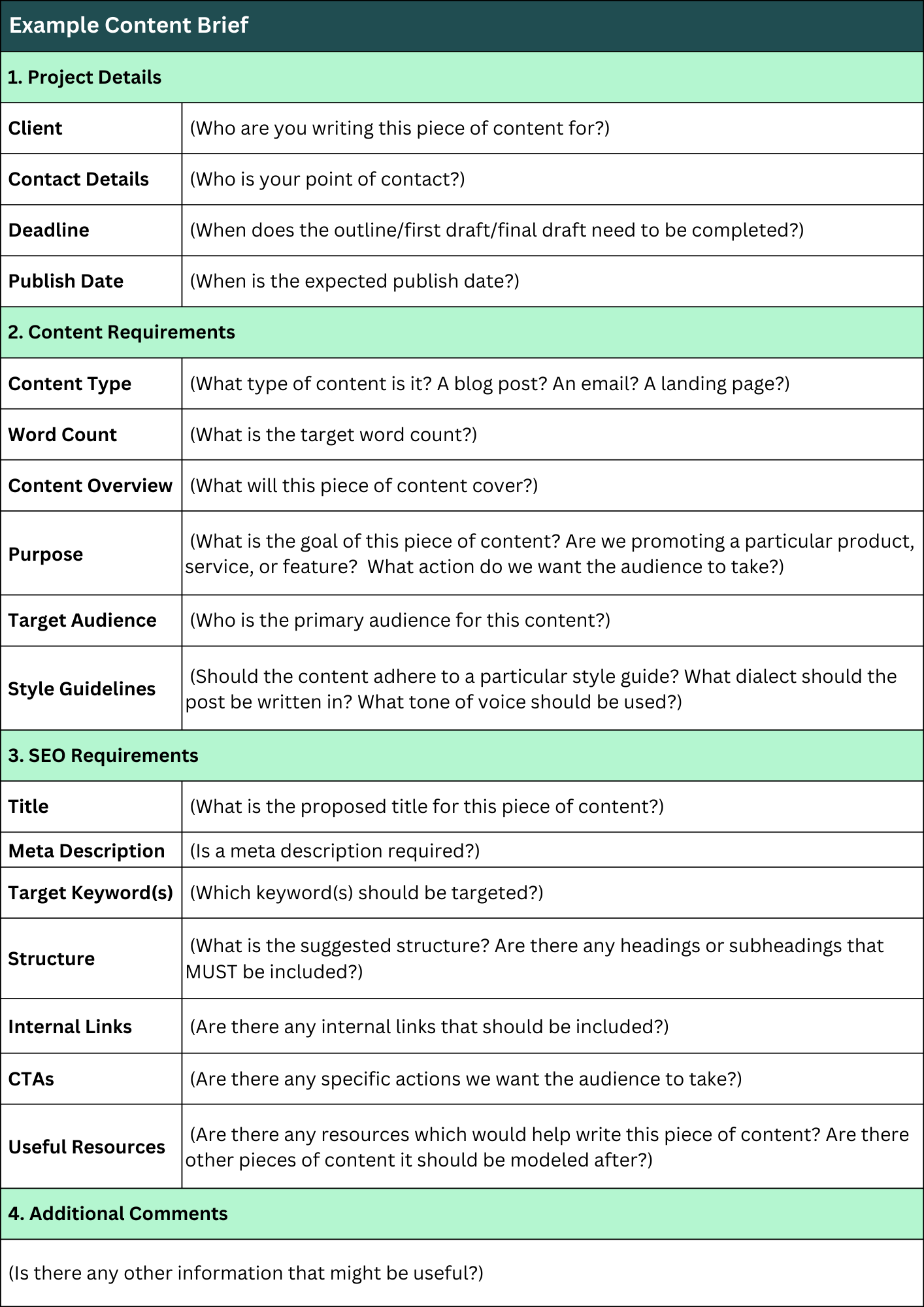
What Is a Content Brief? (And Why You Need One)
As a freelance writer, you could be juggling several clients at any given time, all requesting writing on different topics and requiring varying levels of research. Content briefs help you stay organized, manage your time better, and deliver quality work to your clients. In this post, we’ll discuss the structure of content briefs and why you need one as a freelancer. We’ll cover:
- What is a content brief?
- Why it’s important to have a content brief.
- How to deal with gaps in the brief.
- How Knowadays can help you develop your freelance career.
Keep reading for more about content briefs – including a handy example template that gives you a clear idea of what to expect from your own clients.
What Is a Content Brief?
A content brief is an outline given to writers at the start of a project that details the essential components necessary to complete the work. A typical content brief will provide information on:
- The objective of the content (e.g., to sell a product or service)
- A point of contact for the project
- The desired target audience
- The topic and/or theme of the content
- The preferred structure of the content
- Any SEO goals, such as target keywords or phrases
- The required format (e.g., blog post, article, social media post)
- Expected word count
- The desired tone and voice of the content
- The deadline (and sometimes planned publication date)
The content brief may also outline the review process for the piece, including whether revisions are expected. In addition, it could provide details on specific style guides, resources, or reference materials the client wants you to use throughout the research and writing process.
While the content brief is a great starting point (and makes your life as a freelance writer much easier!), you’ll still need to maintain an open line of communication with your client throughout the project (e.g., an introductory call and a midpoint check-in).
Content Brief Template and Examples
While no two content briefs are alike, there will probably be some similarities among all of them. Of course, you’ll become more familiar with the format of content briefs as you expand your business and take on more clients. Below is an example of a thorough content brief, which will help you understand what details to expect and/or request from your own clients.

You can also find detailed examples online of effective content briefs to use as inspiration for your own freelance business.
Why Is It Important to Have a Content Brief?
It’s important to have at least a basic content brief for every job you take on as a freelance writer – even short jobs. In general, the more information a client can provide at the beginning of a project, the smoother the process will be for everyone. Clear, well-structured content briefs help:
- Reduce the need for time-consuming rewrites
- Avoid unnecessary back-and-forth conversations and/or meetings with your client
- Ensure the content reaches the target audience
- Encourage more efficient collaboration between you and your client
- Ensure everyone involved in the process is on the same page
- Maintain consistency within a project, especially if it involves multiple pieces
Content briefs can also help prevent scope creep, which is when the client continues to change or add to the original requirements without increasing your compensation.
How to Deal with Gaps in the Brief
As we’ve said, it’s unlikely that every content brief you receive from a client will be as detailed and organized as you might want. If you don’t receive a content brief from a client, or there are major gaps in the brief, then you have several options.
You can reach out to them via email to clarify the main points of the project, such as the target audience, word count, and objectives of the piece. You can also request a face-to-face meeting to discuss the details of the project – but make sure you then carefully write them down for your own reference.
If the client hasn’t provided a brief because they’re unsure of how to write one, then consider sending them a customizable template or questionnaire to fill in the information gaps.
Becoming A Freelance Writer
Are you interested in learning more about what it takes to launch your own freelance writing business? Check out our Becoming A Freelance Writer course – it will teach you everything you need to know about how to successfully manage writing projects and client communication. Sample two free lessons from the full course, and get started today!





Your email address will not be published.